Strength 25,000 (Nov. 2015) | ||
Active 13 February 2014 – present Leaders Gen. Bashar al-Zoubi(Overall Leader)Brig. Gen. Ziad Fahd(Deputy Chief of Staff)Lt. Col. Majid al-Sayid Ahmed(Head of the Operations Department)Colonel Saber Safar †(Member of the Military Council)Colonel Bakur Salim al-Salim †(Member of the Military Council)Colonel Khaled al-Nabulsi(Member of the Military Council)Major Hassam Ibrahim(Member of the Military Council)Captain Said Nakresh(Member of the Military Council)Ahmad al-Awdesh(Member of the Military Council)Samer al-Haboush(Member of the Military Council) Area of operations Daraa GovernorateQuneitra GovernorateAs Suwayda GovernorateDamascus Allies United States France Saudi Arabia United Arab Emirates Qatar JordanAlwiya al-FurqanArmy of Free TribesSouthern ArmyRevolutionary Commando ArmyJabhat Ansar al-IslamTahrir al-Sham (in Darra)Ahrar al-Sham (in Darra)Farouq BrigadesJund al-MalahimJaysh al-IslamJamaat Bayt al-Maqdis al-Islamiya Battles and wars Syrian civil war, Daraa offensive Opponents Syrian Armed Forces, National Defence Forces, Islamic State of Iraq and the Levant, Khalid ibn al-Walid Army | ||
The Southern Front is a Syrian rebel alliance consisting of 58 or 54 Syrian opposition factions, established on 13 February 2014 in southern Syria.
By June 2015, Southern Front controlled about 70 percent of Daraa Governorate, according to the International Institute for Strategic Studies.
Contents
- Nature of the Front
- Formation
- Initial growth
- Recent activities
- Support and funding
- Member groups
- Former groups
- References
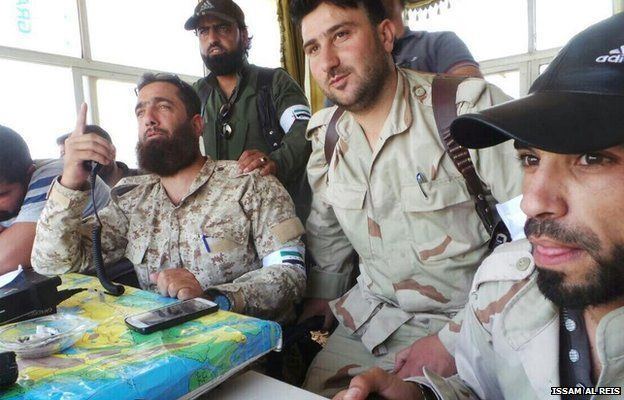
Claims have been made by the Southern Front itself and by media in Britain, Germany and the United Arab Emirates that the Southern Front is being funded by the US and its allies, possibly through a US led Military Operations Center (MOC) based in Amman, Jordan. Since its formation, rebels said, field operation rooms have been added inside Syria to improve coordination between units. The coalition is "described by Western officials as the best organized of the mainstream opposition". The constituent groups range from secularist groups to moderate religious groups, and the Southern front has been described as a "non-hardline Islamist rebel group" that rejects extremism.
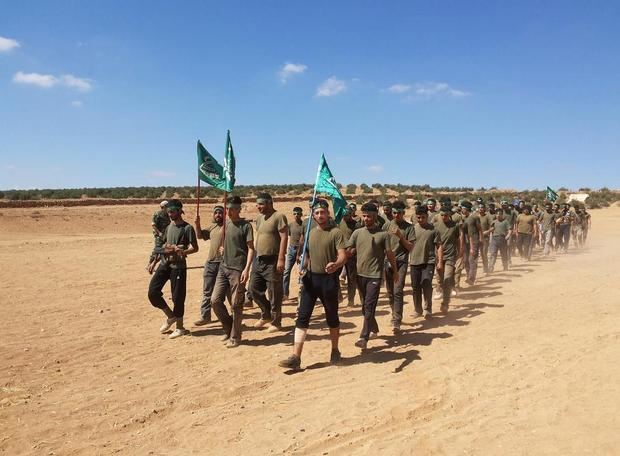
Nature of the Front
The Southern Front is an alliance of 54 rebel groups, ranging from secularist to moderately religious. Bashar el-Zoubi, head of the Yarmouk division, said to the BBC in 2014 that the groups or factions of the Southern Front are militarily coordinated by a moving command centre with a unified leadership but with no overall commander and no centralised command—which is contradictory.
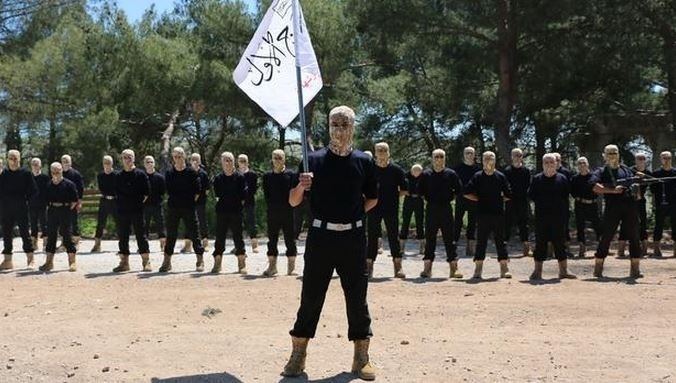
The Carter Center, a private organization in the U.S. promoting human rights globally, in February 2015 also described ‘The Southern Front’ as a loose coalition of self-described moderate armed groups without leadership or organizational structure, that has agreed on the name ‘Southern Front’ to receive support from the ‘Friends of Syria’ (“an international diplomatic collective, which focuses on supporting the Syrian opposition”) through the southern MOC (“Military Operations Center” which is not further defined by Carter Center).
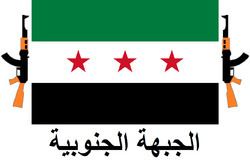
The relation between Southern Front and Syrian armed rebel group Free Syrian Army (FSA) has been described differently by different news sources. Remarks of news sources about such relation are in some cases more or less compatible, in other cases incompatible. Some statements in chronological order:
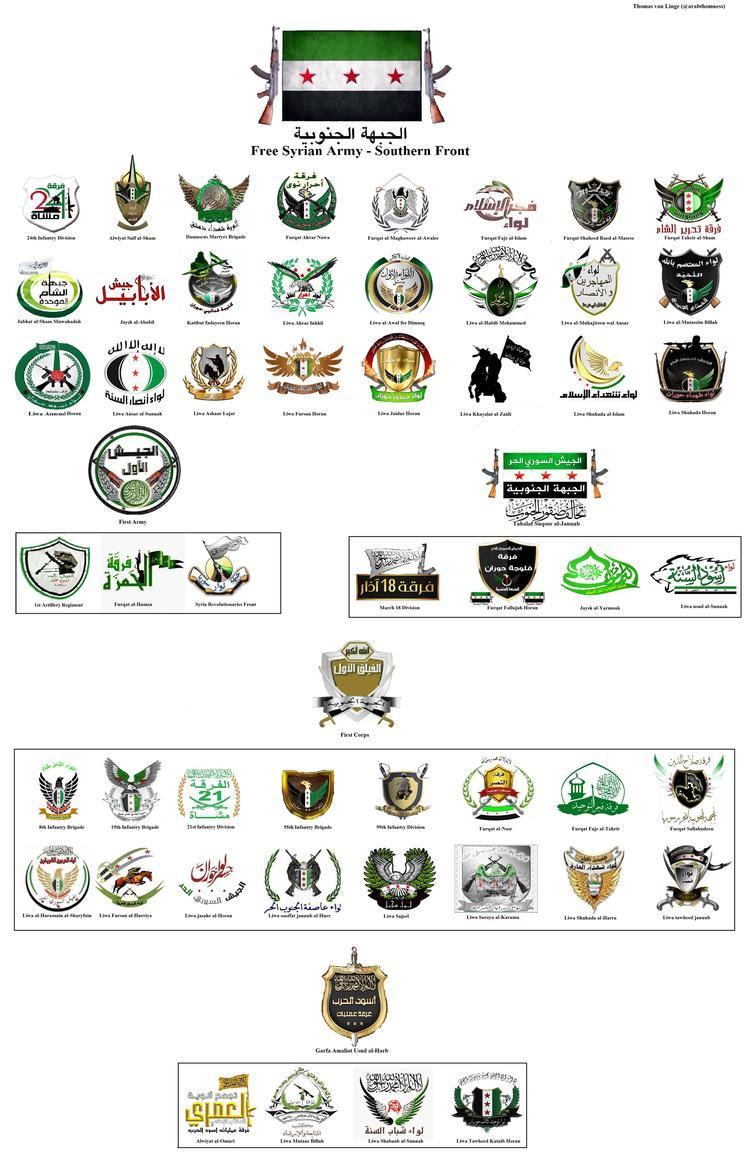
- The Syrian Observer on 14 February 2014 stated that 49 rebel groups in southern Syria had announced in a statement the establishment of ‘The Southern Front’ and suggested vaguely that that Southern Front were affiliated with FSA.
- The Carnegie Endowment for International Peace mentioned on 21 March 2014 that the ‘Omari Brigades’, one of the FSA units from 2011, became a member faction of 'Syria Revolutionaries’ Front' (created December 2013) which was in mid-February 2014 one of the 49 factions that banded together as the Southern Front signing a statement.
- The Huffington Post stated on 15 May 2014 that a loose coalition of about 50 rebel units including the largest FSA units in southern Syria in February 2014 had announced the establishment of the Southern Front.
- The National Interest stated on 6 July 2015 that the Southern Front is a coalition of Free Syrian Army brigades, which had made significant gains in Daraa Governorate.
- Dutch newspaper NRC Handelsblad wrote on 10 October 2015: “Saudi Arabia is increasing its weapons deliveries to Syrian rebels. That concerns three different groups: Jaish al-Fatah, the Free Syrian Army, and the Southern Front.”
- The International Business Times on 12 March 2016 made mention of a ‘Southern Front’ which it describes as a group of Syrian opposition groups formerly members of FSA, focusing primarily on the Daraa and Quneitra governorates.
Formation
In mid-February 2014, according to a Syrian rebel brigade officer, the Military Operations Command (MOC) in Jordan designed for channeling Western and Gulf aid to moderate rebel forces in southern Syria convened a meeting with leaders of nearly 50 southern rebel groups and directed them to create a new umbrella coalition. This resulted in the “Southern Front” being formed on 13 February 2014.
The formation of the front and its backing by western forces challenged al-Nusra's military and political success in the region, though Southern Front units continued to cooperate with al-Nusra forces.
Initial growth
On 13 November 2014, it was reported that 15 factions of the Southern Front drew up a political program as an alternative to the exile-led opposition in Turkey, in which they are planning to turn the Southern Front into a civilian security force. At the same time a provincial council was established. This political program is intended to have "broad appeal among Syrian civilians and to undercut support for more extreme interpretations of Islam that has been spreading".
Around that time, almost 40 small rebel groups joined the First Corps in the south.
On 27 December 2014, the 18 March Division, Yarmouk Army, Fallujah of Houran Brigade and Lions of Sunna Brigade merged under the command structure of the Hawks of the South coalition to strengthen the Southern Front.
On 1 January 2015, the Hamza Division, Syria Revolutionaries Front (SRF) southern command and 1st Artillery Regiment merged under the command structure of the First Army.
As of February 2015, Southern Front operations were executed through seven so-called 'Southern Front operation rooms'.
On 15 May 2015, the Southern Front unified under one military council, chaired by 7 senior members. On 1 June 2015, the Southern Front paraded for the graduation of one thousand new members.
Recent activities
On 25 March 2015, the Southern Front captured the town of Bosra after a 3-day long battle.
On 1 April 2015, the Southern Front captured the Nasib border crossing, the last government-controlled border crossing into Jordan.
After the Southern Front's strategic victory at the capture of Brigade 52 in early June 2015, an analyst from the Institute for Strategic Studies stated that "The Southern Front is now showing itself as an increasingly effective buffer against Islamist rebels as well as an effective means for applying pressure on the Assad regime", and Southern Front spokesman Issam al-Reis stated that "We have most of Daraa liberated, our lines of defense behind us are solid, and now we can start the operation toward Damascus and the highway leading to it".
On 17 June 2015, the Southern Front launched an offensive to take all of Quneitra province.
On 25 June 2015, the Southern Front announced "Southern Storm", an offensive to capture Daraa city, where the Syrian Revolution began in 2012. By mid-August the offensive had failed to make significant advances, but the government had responded by increasing attacks on civilian neighborhoods, killing dozens of civilians, leading to public demonstrations against the Southern Front's failed strategy. An analysis by the Heinrich Böll Foundation suggested that the Southern Front had failed to receive significant support from the Military Operations Center in Jordan.
In July and August 2016 more than 200 rebels from the Southern Front defected to Jabhat Fateh al-Sham, successor to al-Nusra Front, and Ahrar al-Sham due to better pay and more willingness to fight government forces.
Support and funding
General Ibrahim Jbawi, spokesman for the Southern Front, stated in November 2014 that his group received money and weapons from the US, France, Jordan and Saudi Arabia. Activists said that Jordan also facilitated the Southern Front by allowing them to cross freely to and from Jordan.
The Abu Dhabi (United Arab Emirates) based newspaper The National stated in November 2014 that the Military Operations Command centre (MOC) in Amman, Jordan, staffed by “western and Arab military officials”, had sent out food baskets to six rebel factions in southern Syria, presumably members of the Southern Front. The BBC, not revealing its sources, claimed in December 2014 that the Southern Front was “backed” through the Military Operations Center in Jordan, “a logisitics and supply hub” run by the US with European and Arab allies. The German Heinrich Böll Foundation claimed in 2015 that the Southern Front is being "funded" by a Military Operations Center (MOC) in Amman, Jordan which is run by "the US and its allies", but did not specify or corroborate what that "funding" implied. No American official has yet admitted to the US supporting the Southern Front.
The National also reported that Southern Front members participating in the fight against the Syrian government receive $50–$100 per month while those who fight against ISIL receive $100–$250 per month from the MOC. However, the MOC threatened to cut funds unless the SF launch an offensive against ISIL.
